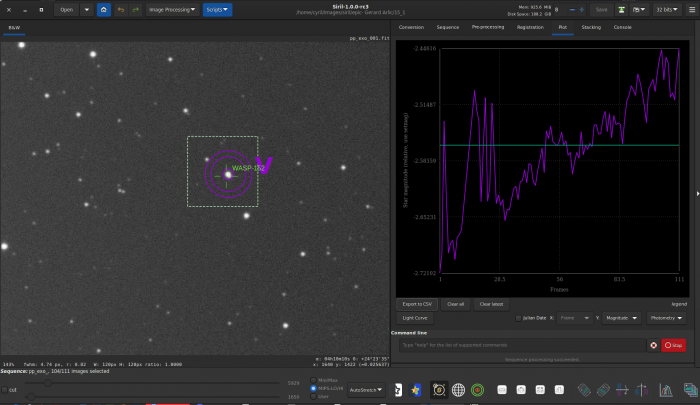PAGE BEING WRITTEN
Siril is capable of analysing star photometry across a sequence to do a light curve, using aperture photometry. See this tutorial for more information on how to proceed. This page is more a technical documentation.
There are a few parameters that drive this, available from preferences.
- inner and outer radius: measuring the magnitude of an object involves measuring the flux of the object and the flux of the background. To sample the background, we must choose pixels that are far away from the object to not contain it, and close enough to be the same background and if possible not contain other objects. An annulus is created with these inner and outer radii, in which background pixels will be sampled
- fixed or dynamic aperture: aperture is the radius around the star centroid where we consider pixels to be part of the star and contribute to its flux. It must be small enough to contain other stars and too much background and large enough to contain all the pixels modified by the star. We have a setting force aperture that allows the aperture to be specified with a constant (not enabled by default). When not enabled, the aperture is set to two times the FWHM, for each star.
- gain:
- min and max pixel values: thresholds can be defined for minimum and maximum values pixels that are part of an aperture photometry computation can take (star and background). If some pixels are below the minimum or above the maximum, the photometry is marked as invalid. This is useful to discard pixel with values in the non-linear realm of the sensor, or simply saturated which makes the photometry impossible. It's currently not possible to include negative values in the computation, min can not be lower than 0, also meaning that pixels if value 0 invalidate photometry.
